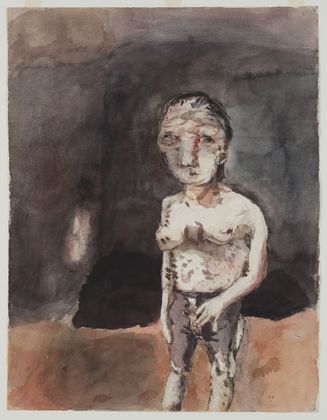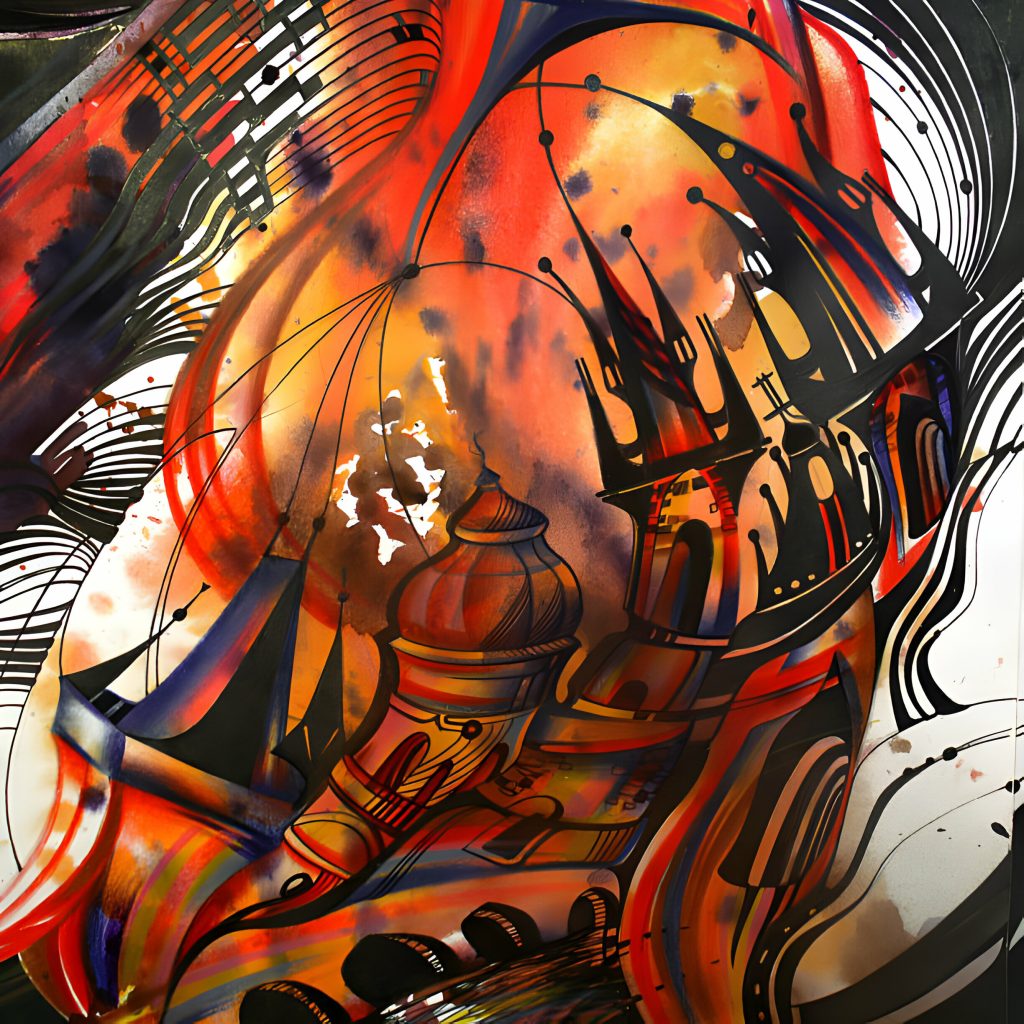In the late 1970s, Georg Baselitz spearheaded a significant revival of expressionism, a movement that originally peaked in the 20th century. This bold revival, mainly rooted in German art, marked a famous reappearance of the movement’s main principles and core values. By the 1980s this wild rebirth had culminated into a global wave, carrying out the winds of change toward the rich sensuality of painting, thus steering away from the cool, detached currents of minimalism and conceptualism that had previously dominated the artistic milieu. This article explores the Neo-Expressionism at movement, so, set back and relax as we dive into the roots and global influences of this intriguing art wave.
Expressionism: The Roots
Definition and Core Beliefs: Expressionism, surfaced in the early 20th century, primarily in Germany. It’s an artistic current that prioritizes and glorifies the visceral expression of emotional experience over concrete physical reality. Its deeply influenced by an innate urge to convey subjective perceptions and emotions, often through the use of bold colors, distorted forms, and dramatic compositions.
Artistic Characteristics: expressionist artists, known to evoke deep emotional responses, leveraging techniques such as aggressive brushwork and jarring juxtapositions of color in an attempt to elicit strong emotions in the viewers. Furthermore, expressionist works often feature themes of alienation or anxiety, encapsulating the artist’s reactions to the modern world.
Impact: Expressionism significantly influenced the development of modern art, challenging traditional perceptions of aesthetics and pushing the limits of artistic expression. This distinct artistic movement functioned as a foundational layer for later movements to build upon. Above all, leaving a lasting influence on disciplines beyond paintings, including literature, theater, and cinematography.

Neo-Expressionism: A Revival With a Twist
Definition and Core Beliefs: Neo-Expressionism, which surfaced in the late 1970s and 1980s, can be seen as both a resurrection and a reaction to the original Expressionist ethos. Nevertheless, Neo-expressionism emerged as a counter-movement to the conceptual and minimalist dominance of the 1960s and 1970s emphasizing a return to painting with emotional depth, expressive intensity, and often, figuration.
Artistic Characteristics: Neo-expressionist artists, such as Georg Baselitz, adopted a raw, visceral approach to painting. They often utilized exaggerated forms, vivid colors, and dynamic compositions to convey intense emotions and personal narrative. The movement was characterized by an eclectic approach, drawing on historical and cultural references while maintaining a focus on the artist’s inner experience.
Impact: Neo-Expressionism played a crucial role in reigniting interest in painting at a time when the medium was seen by some as outdated.
Four Pivotal Neo-Expressionist Masterpieces: A Closer Look
1.”The Big Night Down the Drain” by Georg Baselitz (1963)
Before the Neo-Expressionism movement fully took shape, Georg Baselitz, the pioneering figure of the movement was already laying the groundwork with some of his most iconic works such as “The Big Night Down The Drain.” This painting features a figure with exaggerated, distorted, and evocative features, set against a dark, unsettling background. The work conveys a sense of disorientation and chaos, embodying Baselitz’s innate interest in exploring the human condition through a raw and provocative visual language.
2.”Café Deutschland” by Jorg Immendorff (1978)

Part of a series, “Café Deutschland” is a perplexed, allegorical work centered around divided Germany during the cold war era. Immendorff used exaggerated forms and vibrant colors to create a scene that is both fascinating and deeply political. Furthermore, the painting, densely packed with symbolic elements, and blurry cues, representing the cultural and political upheaval of the time.
3.”Untiteled” by Jean-Michel Basquiat (1982)
Jean Michel’s iconic work, widely associated with Neo-Expressionism, Notably for his raw, emotive and subtle style and use of symbolic representations. This untitled piece from 1982 frames a skull like head against a vibrant and chaotic mark, showcasing Basquiat’s distinct capacities to blend primitive art with contemporary urban themes. His notable works often tackle issues such as identity, race, and society, embodying the central spirit of Neo-Expressionism and through a personal lens.
4.” Interieur” by Anselm Kiefer (1981)
Kiefer’s masterpiece “Interieur” (1981) as a prime example of how Neo-Expressionism can engage with notions such as, history, mythology, and memory. The painting depicts a large, empty hall that references the Reich Chancellery designed by Albert Speer. Kiefer’s use of materials and scale create a captive atmosphere, inviting reflection on Germany’s past and the weight of memory

In a nutshell, Neo-Expressionism’s journey exposes a bold artistic era, rich in emotions and societal narratives, its masterpieces and innovators remind us of art potent capacity to provoke and resonate, underscoring its significance in contemporary culture.







